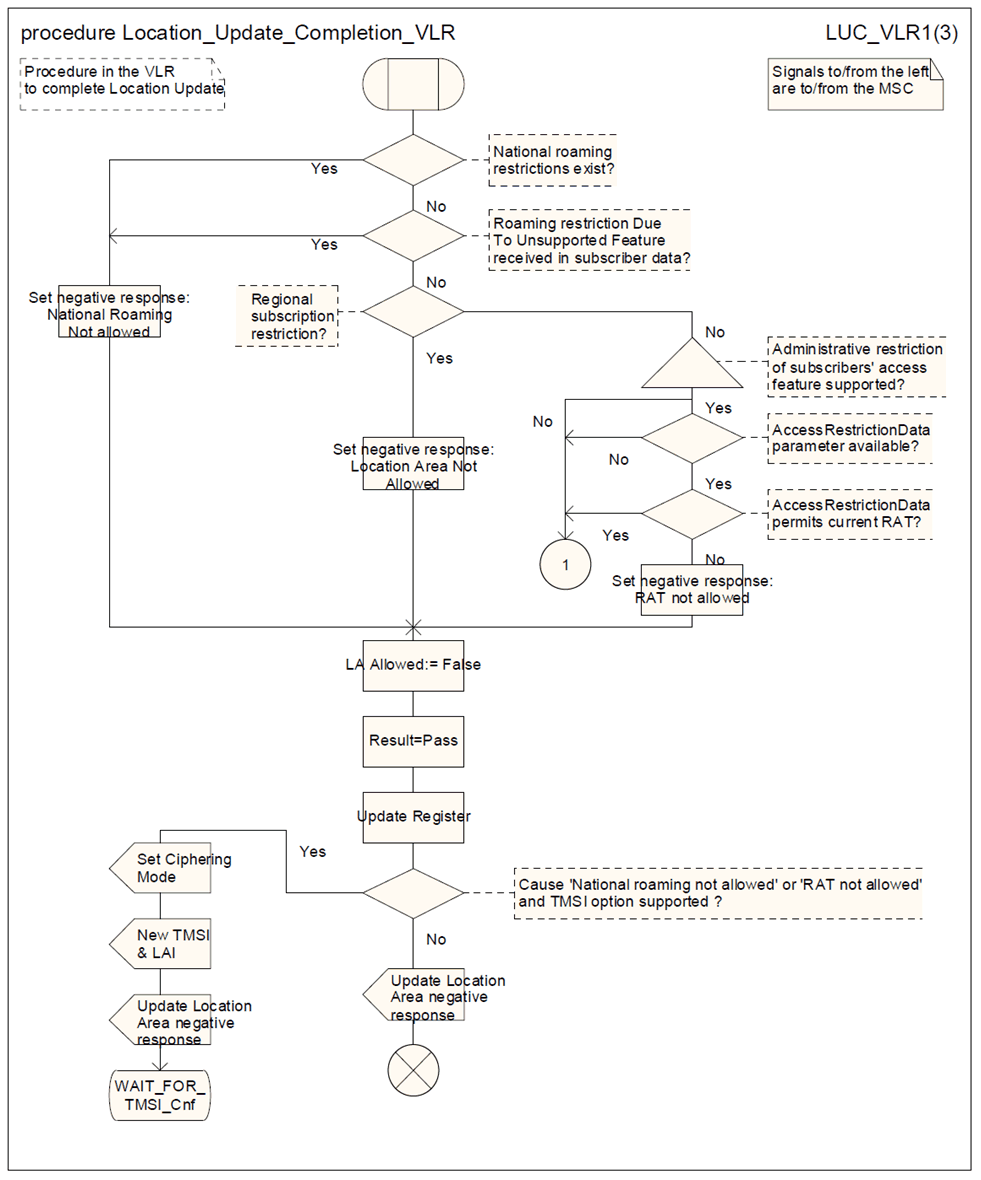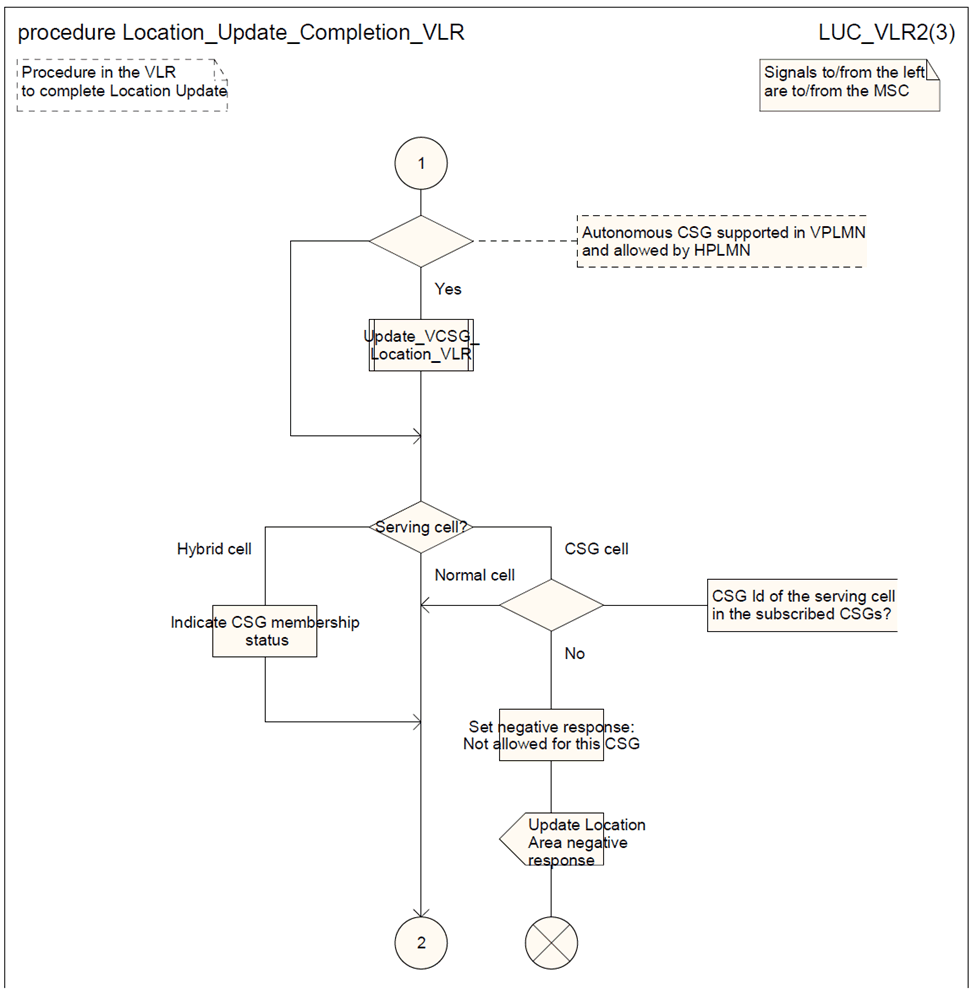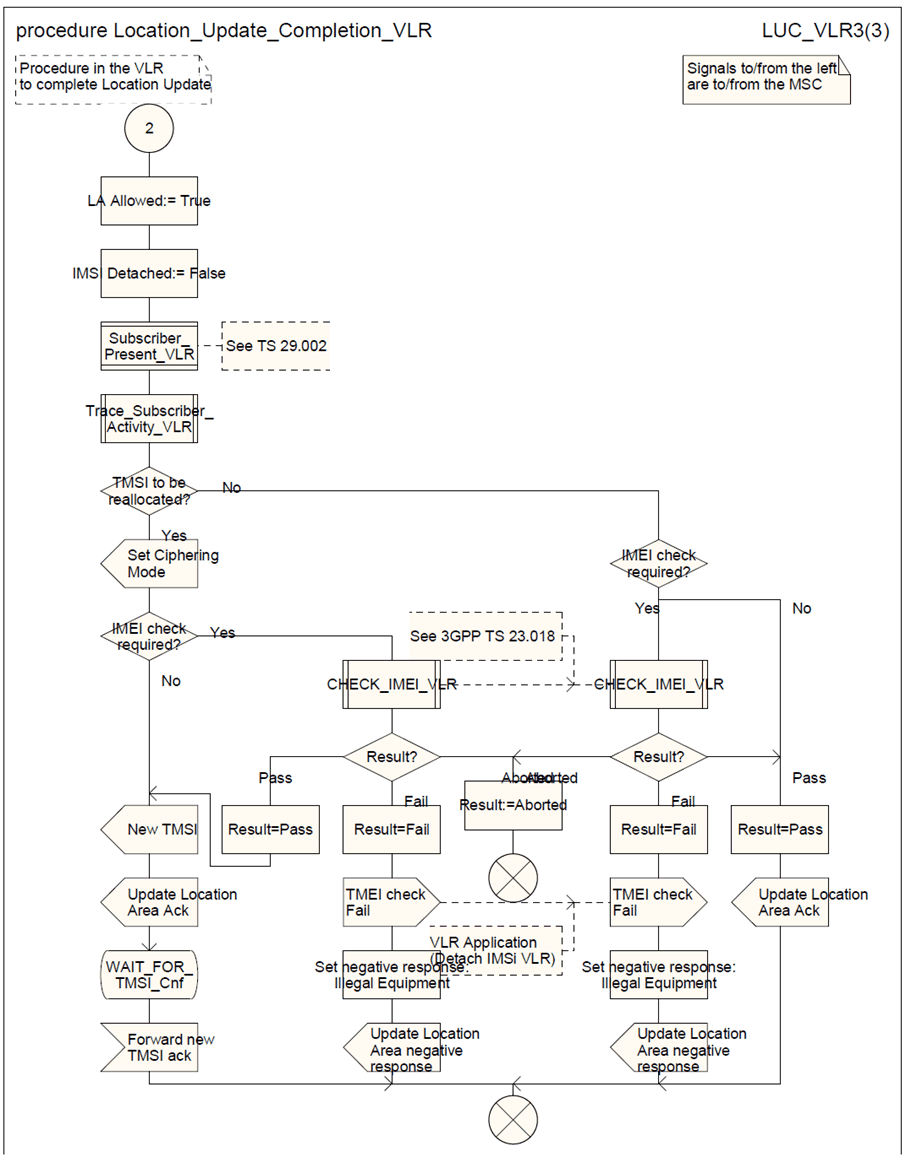Content for TS 23.012 Word version: 18.0.0
1…
4…
4.1.1.2
4.1.2…
4.1.2.1a
4.1.2.2
4.1.2.3
4.1.2.4…
4.1.2.6…
4.1.2.8…
4.1.2.10…
4.1.3…
4.1.3.2
4.1.3.3…
4.1.4…
4.2
4.2A
4.3
4.4…
4.1.2.3 Procedure Location_Update_Completion_VLR p. 25
Sheet 1: Decision "National Roaming Restrictions Exist?" distinguishes whether or not the subscriber is allowed service in the target LA, based on the current location of the MS and the VLR's knowledge of other networks. The "Yes" branch results in the sending of "Update Location Area Negative Response" toward the MSC (and the MS), with cause "National Roaming Not Allowed." However, subscriber data shall not be deleted from the VLR. This is to avoid unnecessary HLR updating should the subscriber be allowed subsequently to roam in other LAs of the same MSC.
Sheet 1: Decision "Access-Restriction-Data permits current RAT?" performs a check on the subscriber's AccessRestrictionData information received from the HLR and either allows the operation to continue or rejects the Location Update. The decision is taken according to the following:
- If AccessRestrictionData value includes "GERAN not allowed" and the LA/RA, where the MS accesses the network, is served by GERAN, then the subscriber's access is not permitted.
- If AccessRestrictionData value includes "UTRAN not allowed" and the LA/RA, where the MS accesses the network is served by UTRAN, then the subscriber's access is not permitted.
- a pre-Rel-8 MS will initiate a location updating if it roams back to the previous Location Area (allowed), i.e. to the location area whose identity is already stored in the MS, after having received the reject cause #13 or #15; otherwise the location updating may not be initiated and mobile terminated calls may not be delivered until the next mobile originated activity or periodic location update (see TR 29.994).
- the next location update enables the new VLR to address the correct previous VLR (which controls the not allowed Location Area) and to obtain the right IMSI and security context; otherwise a wrong VLR is addressed (corresponding to the TMSI/LAI of the VLR that controlled the previous allowed LA) and a wrong IMSI / security context would be obtained if the TMSI was reallocated.

Figure 4.1.2.3-1: (sheet 1 of 3) Procedure Location_Update_Completion_VLR
(⇒ copy of original 3GPP image)
(⇒ copy of original 3GPP image)

Figure 4.1.2.3-2: (sheet 2 of 3) Procedure Location_Update_Completion_VLR
(⇒ copy of original 3GPP image)
(⇒ copy of original 3GPP image)

Figure 4.1.2.3-3: (sheet 3 of 3) Procedure Location_Update_Completion_VLR
(⇒ copy of original 3GPP image)
(⇒ copy of original 3GPP image)